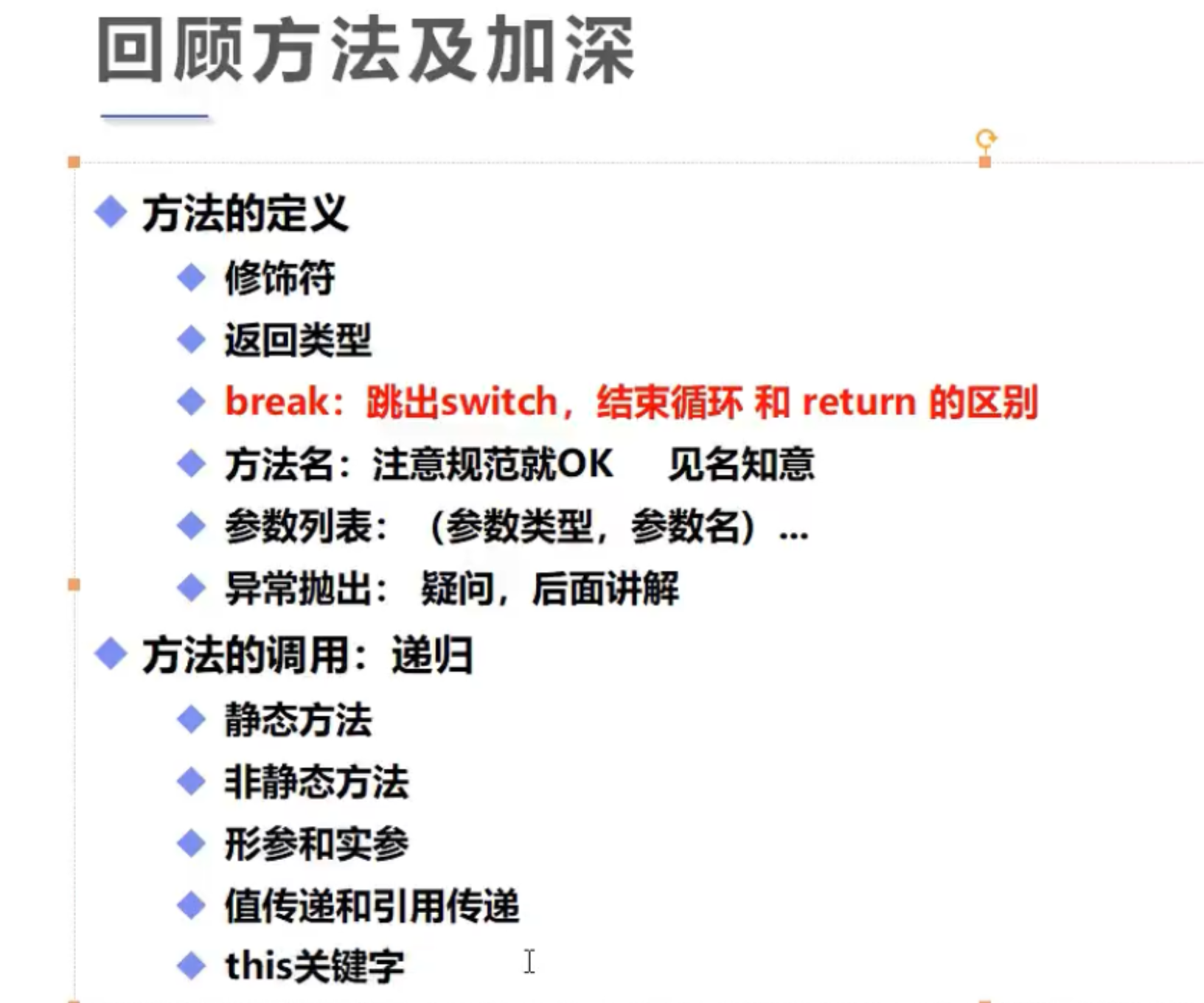Java面向对象一

属性加方法是类


package com.oop.demo01;
import java.io.IOException;
//Demo01 类
public class Demo01 {
//main 方法
public static void main(String[] args) {
}
/*
修饰符 返回值类型 方法名(...){
//方法体
return 返回值;
}
*/
//return 结束方法,返回一个结果!
public String sayHello(){
return "hello world";
}//return 代表当前方法结束
public int max(int a, int b){
return a>b ? a : b;//三元运算符
}
//数组下标越界:Arrayindexoutofbounds
public void readFile(String file) throws IOException {
}
}
package com.oop.demo01;
public class Demo02 {
//静态方法 static
//非静态方法
public static void main(String[] args) {
//实例化这个类 new
new Student().say();
//对象类型 对象名 对象值
Student student = new Student();
student.say();
}
//和类一起加载的
public static void a(){
//b();
}
//类实例化之后才存在
public void b(){
}
}
package com.oop.demo01;
//学生类
public class Student {
//非静态方法
public void say(){
System.out.println("学生说话了");
}
}
package com.oop.demo01;
public class Demo03 {
public static void main(String[] args) {
//实际参数和形式参数的类型要对应!
int add = new Demo03().add(1,2);
System.out.println(add);
}
public int add(int a, int b){
return a+b;
}
}
package com.oop.demo01;
//值传递
public class Demo04 {
public static void main(String[] args) {
int a = 1;
System.out.println(a);
Demo04.change(a);
System.out.println(a);
}
public static void change(int a) {
a = 10;
}
}
package com.oop.demo01;
//引用传递:对象,本质还是值传递
public class Demo05 {
public static void main(String[] args) {
Person person = new Person();
System.out.println(person.name);
Demo05.change(person);
System.out.println(person.name);//tom
}
public static void change(Person person) {
person.name = "tom";
}
}
//定义了一个Person类,有一个属性:name
class Person{
String name; //null
}


package com.oop.demo02;
//一个项目应该只存有一个main方法
public class Application {
public static void main(String[] args) {
//类:抽象的,要实例化
//类实例化后会返回一个自己的对象!
//student对象就是一个Student类的具体实例!
Student student = new Student();
Student xiaoming = new Student();
Student xiaohong = new Student();
xiaoming.name="小明";
xiaoming.age=3;
System.out.println(xiaoming.name);
System.out.println(xiaoming.age);
xiaohong.name="小红";
xiaohong.age=3;
System.out.println(xiaohong.name);
System.out.println(xiaohong.age);
xiaohong.study();
}
}
package com.oop.demo02;
//学生类
public class Student {
//属性:字段
String name;//null
int age;//0
//方法
public void study(){
System.out.println(this.name+"在学习");//this代表当前类
}
}
package com.oop.demo02;
//一个项目应该只存有一个main方法
public class Application {
public static void main(String[] args) {
//new 实例化一个对象
//输出有参构造器
Person person = new Person("tom",23);
System.out.println(person.name);
System.out.println(person.age);
//输出默认构造器
// Person person = new Person();
// System.out.println(person.name);
/*
构造器:
1. 和类名相同
2. 没有返回值
作用:
1. new 本质在调用构造方法
2. 初始化对象的值
注意点:
1. 定义有参构造之后,如果想使用无参构造,显示的定义一个无参的构造
*/
}
}
package com.oop.demo02;
//java ---》 class
public class Person {
//一个类即使什么都不写,它也会存在一个方法
//显示的定义构造器
String name;
int age;
//实例化初始值
//默认的构造器 无参
//1. 使用new关键字,本质是在调用构造器
//2. 用来初始化值
public Person(){
this.name = "jerry";
}
//有参构造:一旦定义了有参构造,无参构造就必须显式定义
//重载 有参
public Person(String name){
this.name = name;
}
//Ait+insert 生成构造器
public Person(String name, int age) {
this.name = name;
this.age = age;
}
}

